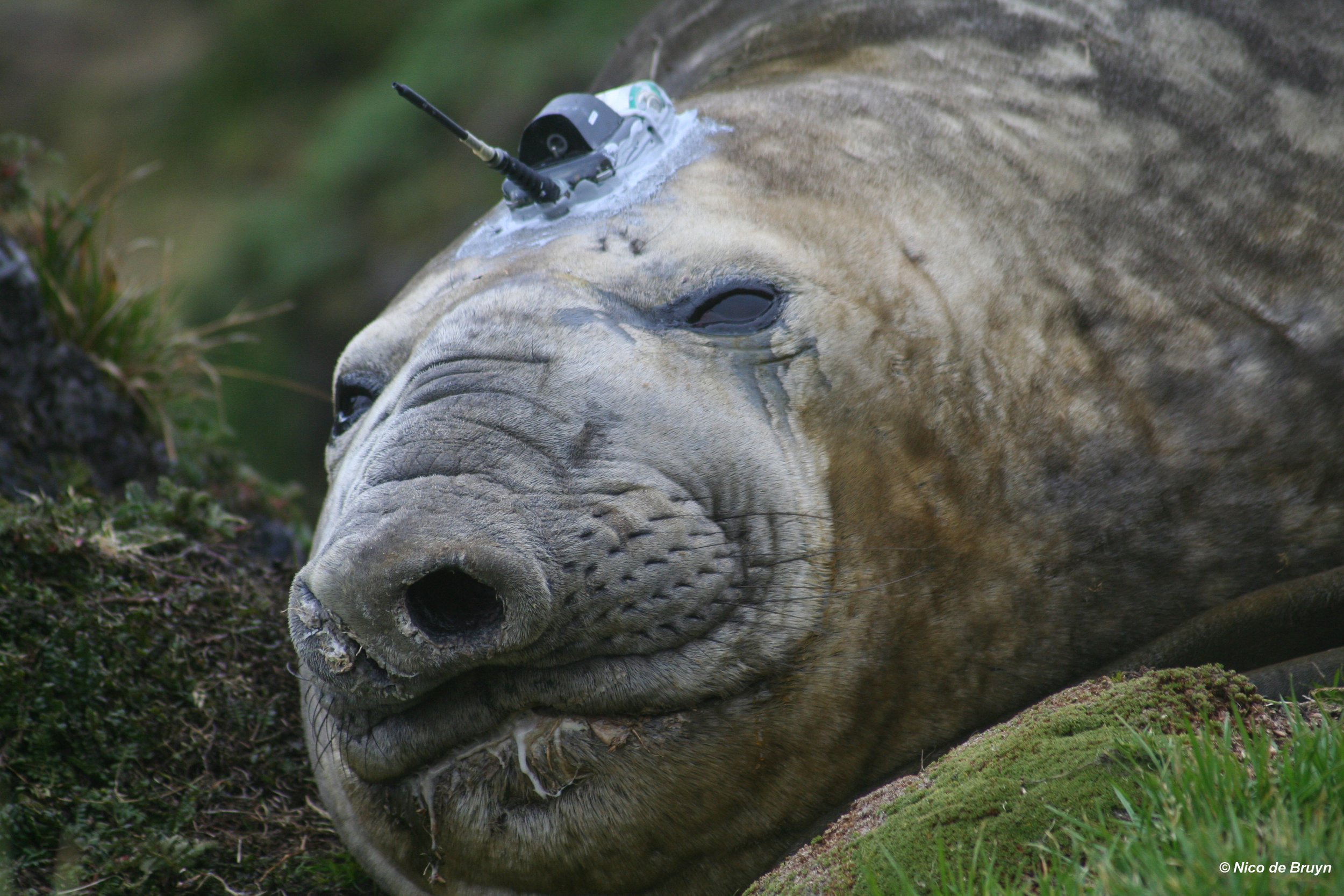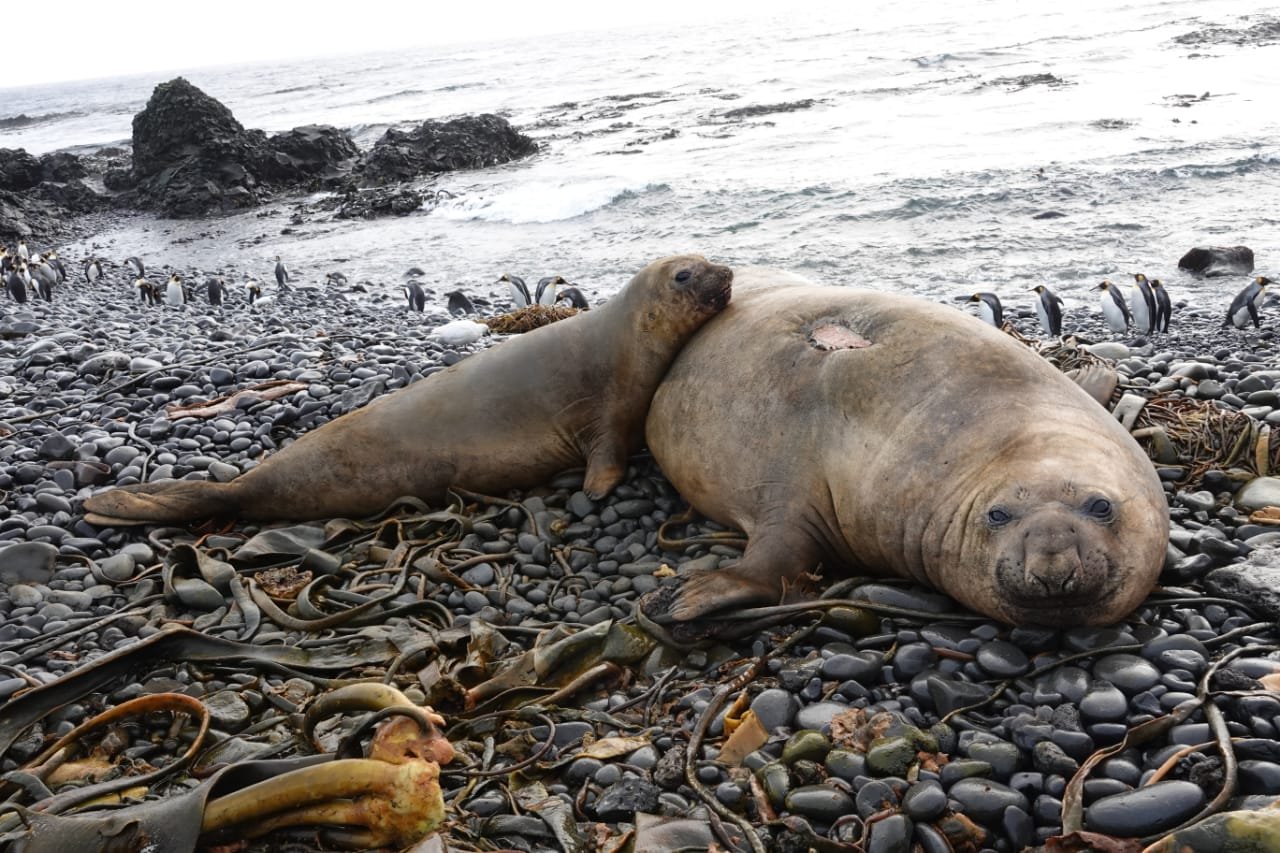Elephant seals show remarkable consistency in 3D foraging behaviour!
/In a changing ocean environment, would a deep-diving top predator consistently return to specific areas to find food? Would such a predator show consistent diving behaviour over multiple foraging trips? In the face of rapid environmental change, these were questions we were interested in exploring for southern elephant seals at Marion Island, using tracking and diving data spanning several years.
A young male southern elephant seal sporting a SMRU tracking device. Photo: Nico de Bruyn
Individual-level specialization in forage strategies may confer advantages to individual animals over longer time periods, even though it may also incur shorter-term costs. In a recently published paper in the journal Animal Behaviour, we illustrate long-term (up to 7-year!) fidelity of individual elephant seals to not only their foraging ranges, but also the depth layers targeted during foraging migrations. We hypothesize that the strong fidelity displayed by individual animals may limit the individual-level adaptability of elephant seals to rapid environmental changes. Furthermore, we recommend more long-term longitudinal studies to quantify the influence of individual specialization on our understanding of the population-level ecology of elephant seals, as well as other key predators.

















































